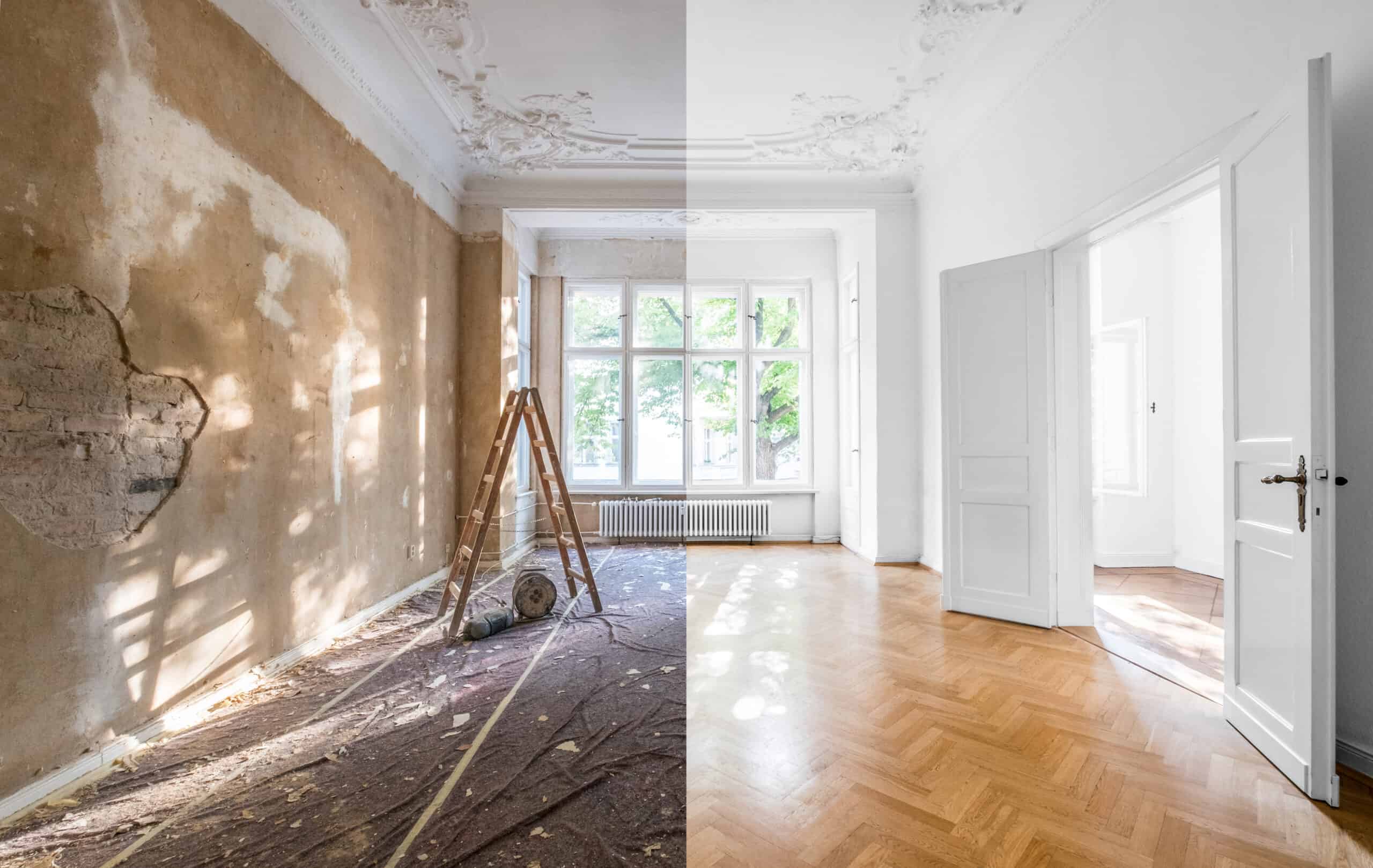Buying a home that needs repairs? A rehab loan could be the financing solution you’ve been looking for — especially if you’re considering an FHA 203(k) loan. Whether you’re buying a fixer-upper or updating your current home, a 203(k) loan allows you to finance both the purchase and renovation with a single mortgage.
This guide explains how FHA 203(k) loans work, the types of rehab loans available, what projects qualify, and how to navigate the process — including how a 203(k) consultant may help you along the way.
What Is a Rehab Loan?
A rehab loan is a type of mortgage that includes funds for renovations and repairs. The most common version is the FHA 203(k) loan, backed by the Federal Housing Administration.
With a 203(k) rehab loan, borrowers can:
-
Purchase a home and finance improvements
-
Refinance an existing mortgage and roll in renovation costs
-
Make repairs that bring a home up to code or improve livability
Instead of taking out a separate construction loan or using high-interest credit, homeowners can finance the project affordably through a single, government-backed loan.
How Does a 203(k) Loan Work?
The 203(k) program combines the purchase or refinance of a home with a loan for repairs, upgrades, or remodeling. Funds are placed into an escrow account and disbursed as work is completed.
How it works:
-
You apply for an FHA 203(k) loan through an approved lender
-
You select a contractor and define the scope of renovations
-
An FHA-approved appraiser estimates the after-repair value (ARV)
-
The loan closes, and the renovation funds are held in escrow
-
Funds are released in draws as milestones are completed
This structure makes it easier to manage large renovation projects while still locking in competitive FHA mortgage rates.
Learn more: FHA Mortgage Guide
Standard vs. Limited 203(k) Loans: What’s the Difference?
The FHA offers two versions of the 203(k) rehab loan:
Limited 203(k):
-
Max renovation budget: $35,000
-
No structural changes allowed
-
Ideal for minor upgrades: kitchens, flooring, appliances, roofing
Standard 203(k):
-
No cap on renovation costs (up to FHA loan limits)
-
Structural changes and major repairs allowed
-
Requires a 203(k) consultant to oversee the project
Explore more on this process: Working with 203(k) Consultants
What Projects Are Eligible Under a 203(k) Loan?
Approved renovations must add value to the home or restore livability. Here are common eligible improvements:
Allowed:
-
Kitchen and bathroom remodels
-
Roofing, gutters, and downspouts
-
HVAC, plumbing, and electrical upgrades
-
Accessibility modifications
-
Structural repairs
-
Energy-efficient upgrades
-
Landscaping and exterior improvements
Not allowed:
-
Luxury additions (e.g., pools, outdoor kitchens)
-
Detached structures not used for living
-
Projects that exceed FHA loan limits
When a Rehab Loan Makes the Most Sense
A 203(k) rehab loan isn’t the right fit for everyone, but it can be a game-changer in the right scenario. Here are some common situations where using a 203(k) loan can provide serious value:
-
Buying a fixer-upper in a desirable neighborhood: If you’re looking to get into a great school district or high-demand area, a home that needs repairs may be your best entry point. A 203(k) loan allows you to make it livable — and eventually valuable.
-
Tight housing market: When inventory is low, buyers may turn to homes others overlook due to needed repairs. A rehab loan opens up more options.
-
Expanding or reconfiguring your space: A Standard 203(k) allows for structural changes — like converting a garage or adding a bedroom — making it ideal for growing families.
-
Dealing with code violations or safety issues: If a property has problems that prevent traditional financing (such as electrical issues or foundation cracks), a rehab loan can cover those necessary repairs and bring the property up to FHA standards.
-
Aging in place or accessibility upgrades: A 203(k) loan can also be used to install ramps, widen doorways, or make other accessibility-related improvements for aging homeowners.
In each of these situations, the ability to combine purchase and renovation into one loan can save time, simplify budgeting, and ultimately help buyers build equity faster.
Who Qualifies for a 203(k) Rehab Loan?
Since 203(k) loans are FHA-backed, they follow the same FHA loan requirements, including:
-
A credit score of at least 580
-
Minimum 3.5% down payment
-
Property must be a primary residence
-
Work must begin within 30 days of closing
Need help running the numbers? Try our FHA Mortgage Calculator to estimate your general FHA eligibility.
Step-by-Step: How to Apply for a 203(k) Loan
- Find an FHA-approved lender
Not all lenders offer 203(k) loans, so make sure you’re working with one that has direct experience with the program. - Get pre-approved based on income, credit, and down payment
This step includes submitting financial documents and may also involve pre-screening your renovation plans to confirm they align with FHA guidelines. - Select a contractor and get renovation bids
Contractors must provide detailed cost estimates and must be licensed and insured. Most lenders won’t allow self-managed projects, so DIY is off the table for major repairs. - Choose between a Standard or Limited 203(k)
Your lender can help determine which version is best based on your project scope, whether you’ll need a 203(k) consultant, and whether structural repairs are involved. - Work with a 203(k) consultant (Standard loans only)
The consultant performs an initial inspection, prepares a work write-up, and acts as your liaison during construction. They also help monitor progress and approve draw requests. - Undergo an appraisal based on after-repair value
The appraiser evaluates what the home will be worth once the renovations are complete — not just its current condition. This helps determine the maximum loan amount. - Close on the loan and begin renovations
After closing, funds are placed in an escrow account and released in installments as the work is completed and verified. - Funds are distributed as work progresses
Draws are typically tied to milestones — such as demo, inspection, or final walkthrough. The consultant (if applicable) and lender both approve disbursements.
This process can take longer than a traditional mortgage, but for buyers focused on value, it’s often well worth the wait.
Benefits of Using a Rehab Loan
-
One loan, one payment – no need for separate financing
-
Low down payment (as little as 3.5%)
-
Flexible project types for both repairs and upgrades
-
Competitive FHA interest rates
-
Can help increase home value and equity
Potential Challenges to Consider
-
The process may take longer than a traditional FHA loan
-
You’ll need to work with licensed contractors
-
Standard 203(k) loans require working with a HUD consultant
-
Funds are not disbursed upfront — they’re released in stages
FAQ: FHA 203(k) Rehab Loans
What is a 203(k) loan?
It’s a type of FHA mortgage that includes funds for home repairs and renovations, allowing you to finance purchase and upgrades together.
Can I use a 203(k) loan for any type of home?
Only primary residences are eligible. You cannot use a 203(k) loan for vacation homes or investment properties.
Do I need a 203(k) consultant?
Yes, if you’re using a Standard 203(k) loan. They help manage the project, inspections, and draw schedules.
How long does a 203(k) loan take to close?
The process often takes 45–60 days, depending on the scope of work and consultant involvement.
What’s the difference between a rehab loan and a renovation loan?
They’re often used interchangeably, but “rehab loan” usually refers to the FHA 203(k) program specifically.
Can I use a 203(k) loan for a second home or investment property?
No. FHA 203(k) loans are only available for primary residences. You must live in the property as your main home after the renovations are complete. If you’re looking to renovate an investment or vacation property, you’ll need to explore other types of renovation financing.
Can I do the renovation work myself with a 203(k) loan?
Generally, no. Most lenders require that work be done by licensed contractors, especially for Standard 203(k) loans. However, in rare cases with Limited 203(k) loans, a borrower with professional experience and lender approval may be able to complete minor tasks — but this must be documented and agreed upon in advance.
Final Thoughts
If you’re buying a home that needs work — or looking to renovate your current one — an FHA 203(k) rehab loan offers a flexible and affordable way to finance it. By combining the purchase and renovation costs into a single loan, it simplifies the process and lowers out-of-pocket expenses.
While 203(k) loans do come with extra steps and documentation, especially for larger projects, they’re one of the few ways to buy and build equity at the same time. Just make sure you work with a qualified lender, understand the differences between Limited and Standard loans, and, when needed, seek guidance from a certified 203(k) consultant.
Related Posts

Understanding the Construction Loan Process: How It Works from Start to Finish
Financing a new home build is very different from buying an existing one. Traditional mortgages won’t cover a home that doesn’t yet exist

Working with 203K Consultants: Navigating the FHA Renovation Loan Process
If you’re buying a fixer-upper with an FHA 203(k) loan, a 203(k) consultant plays a critical role in the success of your renovation.

What Is an FHA Loan? A Beginner’s Guide to FHA Mortgages
If you’re planning to buy a home and your credit score isn’t perfect or your savings are limited, you may have heard of

